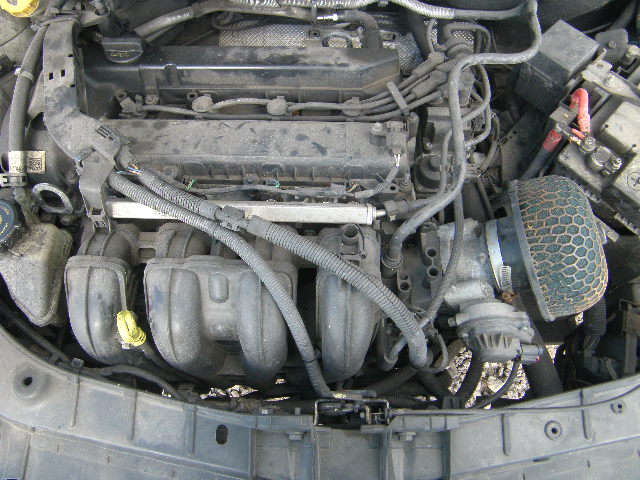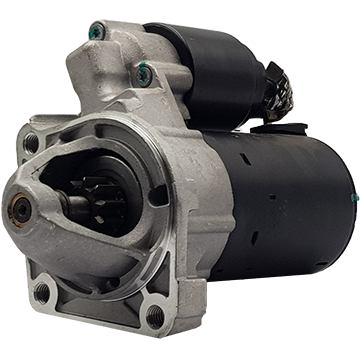Save Money on Repairs with Regular Ford Fiesta Engine Inspections
Save Money on Repairs with Regular Ford Fiesta Engine Inspections
Blog Article
Opening the Power of Engines: A Comprehensive Guide to Efficiency and Performance
Comprehending the elaborate technicians of engines is critical for both performance enthusiasts and daily chauffeurs. By checking out essential metrics such as horse power and torque, one can appreciate exactly how adjusting techniques enhance efficiency while addressing environmental concerns. Regular upkeep plays a crucial function in maintaining optimum efficiency over time. As the auto landscape changes towards electrification and progressed modern technologies, the concern arises: exactly how can we effectively adjust to these changes while optimizing engine capacities? The answers might redefine our technique to engine performance and performance in means that are both enlightening and essential.
Comprehending Engine Essentials
What comprises the fundamental auto mechanics of an engine? At its core, an engine is a machine developed to transform gas right into mechanical energy with a series of controlled explosions or combustion processes. The main parts include the cylinder, piston, crankshaft, camshaft, and shutoffs. The cyndrical tube acts as the chamber where combustion occurs, while the piston relocates within the cylinder to transform the power from burning into direct activity (ford fiesta engine).
The crankshaft after that changes this straight motion into rotational power, which inevitably powers the lorry. The camshaft controls the opening and closing of the valves, managing the consumption of air and fuel and the expulsion of exhaust gases. In addition, the engine relies upon a meticulously calibrated fuel-air combination, ignition system, and cooling system to make certain optimal performance and effectiveness.
Understanding engine fundamentals additionally includes acknowledging the significance of engine cycles, such as the four-stroke cycle, which includes consumption, compression, exhaust, and power strokes. Each stage is essential in guaranteeing the engine works efficiently and efficiently. Mastery of these essential auto mechanics lays the foundation for discovering more intricate engine dynamics and performance metrics, necessary for maximizing both power result and effectiveness.
Trick Efficiency Metrics
Secret performance metrics are essential for reviewing an engine's effectiveness and power output, giving important insights for both suppliers and customers. These metrics function as criteria for engine performance, enabling notified decisions in production, style, and purchasing.
Among the primary metrics is horsepower, which evaluates the engine's capacity to do work over time. Torque, measured in pound-feet, is another crucial statistics that suggests the engine's rotational force, directly affecting velocity and pulling capability. Gas effectiveness, generally measured in miles per gallon (MPG) or liters per 100 kilometers (L/100km), analyzes exactly how successfully the engine converts fuel right into motion, affecting functional costs and environmental considerations.
In addition, thermal effectiveness actions how well an engine converts fuel energy right into beneficial job, exposing insights right into power losses largely with heat. Exhaust degrees, including CO2 and NOx, are likewise vital, showing the engine's environmental impact and compliance with regulatory standards.

Tuning Strategies for Effectiveness
Tuning methods play a significant role in boosting engine performance by enhancing performance metrics determined in earlier discussions (ford fiesta engine). Different techniques exist to tweak an engine, each adding to improved gas economy and minimized discharges
One effective strategy is readjusting my latest blog post the air-fuel proportion, making sure the engine runs within the optimal combustion program. A leaner blend can enhance gas efficiency, yet it has to be stabilized to stop misfires or engine knock. Additionally, reprogramming the engine management system can rectify criteria such as ignition timing, which further boosts effectiveness while preserving power outcome.
Another crucial method includes modifying the consumption and exhaust systems. Upgrading to high-performance air filters and exhaust headers can decrease back pressure, promoting much better air movement. This enables the engine to breathe even more openly, resulting in improved combustion effectiveness.
Furthermore, the implementation of advanced tuning tools, like dyno testing, offers accurate data that makes it possible for targeted modifications. here are the findings Regularly checking these performance metrics makes sure that tuning initiatives generate the wanted performance end results. Jointly, these methods not just strengthen engine efficiency yet likewise add to long-lasting sustainability in engine operations.
Upkeep for Optimal Efficiency
Regular engine upkeep is vital for accomplishing optimum performance and durability. A properly maintained engine not just runs successfully however likewise lessens the threat of expensive fixings and breakdowns. Secret components needing regular interest consist of oil, filters, belts, and spark plugs.
Altering the engine oil at suggested intervals is vital, as oil lubes moving components and prevents overheating. Replacing oil and air filters makes sure that impurities do not harm engine function. Disregarding these components can cause lowered performance and potential engine damage.
Furthermore, checking and changing used belts and tubes is crucial to stop sudden failures. Timing belts, particularly, ought to be replaced according to the producer's routine to stay clear of disastrous engine damages.
Ignition system must likewise be checked and replaced as required, because they play a critical duty in ignition and gas performance.
Future Fads in Engine Innovation
Welcoming advancements in innovation, the future of engine design is poised to reinvent efficiency and efficiency throughout various applications. Crossbreed and totally electrical powertrains are coming to be significantly conventional, providing decreased discharges and improved gas effectiveness.
Moreover, developments in materials science are causing lighter, stronger parts that improve engine efficiency webpage while decreasing power consumption. Advanced manufacturing techniques, such as 3D printing, permit for the production of complex geometries that improve air movement and thermal management, hence optimizing burning procedures.
Furthermore, the integration of synthetic knowledge and artificial intelligence is set to transform engine diagnostics and efficiency tuning. These modern technologies can examine vast quantities of information in real time, making it possible for anticipating maintenance and customized performance improvements.
Verdict
In verdict, opening the power of engines needs a detailed understanding of their technicians and efficiency metrics. Applying reliable adjusting methods and adhering to regular upkeep techniques substantially boost engine capacities.
Additionally, the engine counts on a meticulously calibrated fuel-air combination, ignition system, and cooling system to ensure optimum efficiency and efficiency.
Understanding engine basics additionally involves identifying the importance of engine cycles, such as the four-stroke cycle, which consists of intake, power, compression, and exhaust strokes. Mastery of these basic mechanics lays the foundation for exploring a lot more complex engine characteristics and efficiency metrics, necessary for optimizing both power result and efficiency.

Welcoming innovations in technology, the future of engine layout is positioned to reinvent efficiency and effectiveness across various applications.
Report this page